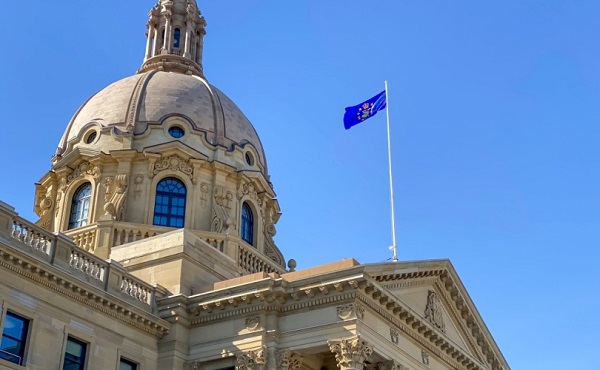Alberta
On Friday, Alberta’s energy minister hailed their largest solar project. On Sunday, it was producing 10.9% at noon
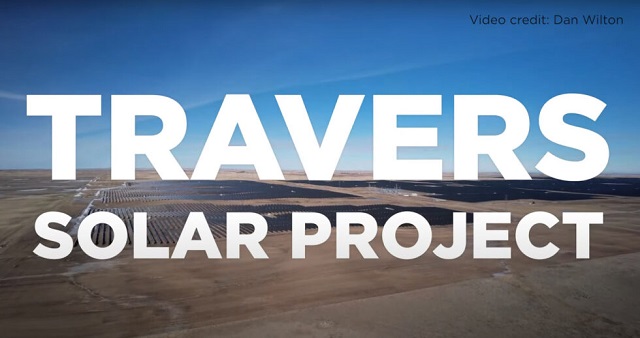
This was the opening splash for a video clip posted by the Alberta energy minister on social media. Two days later, its power output at noon was barely 11 per cent. YouTube/Canadian Energy Centre
From PipelineOnline.ca
Brian Zinchuk is editor and owner of Pipeline Online
And wind was doing even worse
Even though Alberta’s build-out of 38 wind farms and 36 solar farms have resulted in an enormous growth of nameplate power generating capacity, the reality was far from the advertised on Sunday, according to data from the Alberta Electric System Operator (AESO).
Despite the noon hour being defined as the sun being at its highest point in the sky, Alberta’s grid-scale solar facilities were having a tough day on Oct. 22. At 11:53 a.m., solar was producing 152 megawatts out of an installed base of 1,292 megawatts. That was 11.8 per cent of capacity. On a good day, that number is closer to 1,000 megawatts around noon.

Power generation in Alberta at 11:53 a.m. on Oct. 22. All numbers are in megawatts, MC is maximum capacity, and TNG is total net to grid. Alberta Electric System Operator
It wasn’t hard to figure out why solar hand tanked. A belt of heavy clouds, visible from Environment and Climate Change Canada satellite imagery, blanketed the principle solar power production region of southern Alberta.

Heavy clouds covered southern Alberta at 11:30 a.m. on Sunday. Environment and Climate Change Canada
Travers, the largest solar facility in Canada with a rated capacity of 465 megawatts and having cost $700 million, was producing 51 megawatts a few minutes before noon. That was 10.9 per cent. Ironically, Alberta Energy Minister Brian Jean had posted on LinkedIn on Oct. 20, “Did you know Alberta is home to Canada’s largest solar farm? Once we set clear rules around land use, reclamation and transmission, we’ll get back to work leading Canada and the world on renewable electricity. I’m proud of our energy workers. Check out this incredible clip 👇”
That 22 second video clip was originally posted by the Canadian Energy Centre, the Alberta government’s “war room,” whose mission is to set the record straight, as it were. “The Canadian Energy Centre’s mandate is to promote Canada as the supplier of choice for the world’s growing demand for responsibly produced energy,” says the Centre’s mandate.
Wind peters out
And wind power production was having an even worse day, with wind power plummeting as the morning turned into afternoon. By that time, wind was generating just 67 megawatts out of an installed based of 3,853 megawatts. That’s just 1.7 per cent of nameplate capacity.
So at that moment, combined wind and solar were producing 219 megawatts out of a nameplate capacity of 5,145, or 4.3 per cent of capacity.
Alberta’s final remaining coal-fired power facility was producing 802 of 820 megawatts of nameplate capacity, or 97.8 per cent. And its power output was 3.7 times the total output of all grid-scale wind and solar across Alberta, from 36 solar farms and 38 wind facilities, composed of hundreds of turbines and costing billions of dollars. As noted above, Travers, alone, cost $700 million and covers 3,330 acres with 1.3 million solar panels.
That last remaining coal plant, the Genesee Power Station, will soon be converted to natural gas, meaning an end to coal-fired power generation in Alberta – a province whose coal reserves run from Edmonton southwest to the BC and US borders.
The wind situation stayed much the same throughout the afternoon, and by 4:18, solar had dropped to 69 megawatts and wind was just 83 megawatts.

Wind generation in Alberta at 11:53 a.m. on Oct. 22. Twenty-four of 38 wind farms were producing exactly zero power at that moment. All numbers are in megawatts, MC is maximum capacity, and TNG is total net to grid. Alberta Electric System Operator
And near the supper hour, X bot account @ReliableAB noted AESO data showing wind was producing 86 megawatts and solar was producing 28 megawatts. At that moment, fossil fuels, principally natural gas, accounted 94.3 per cent of Alberta’s electricity. Alberta was getting 345 megawatts of power from imports, and batteries were contributing zero megawatts.
At this moment 94.3% of Alberta's electricity is being produced by fossil fuels. Wind is at 2.2% of capacity and producing 0.9% of total generation, while solar is at 2.2% of capacity and producing 0.29% of total generation. At the same time we are importing 345 MW or 3% pic.twitter.com/3gCrbqKvaI
— Reliable AB Energy (@ReliableAB) October 22, 2023
That 94.3 per cent is significant, because the federal government’s clean electricity regulations will require “unabated” fossil fuel power generation to shut down by 2035, with the exception that unabated natural gas generation could be used for up to 450 hours per year, per generator. As Premier Danielle Smith has pointed out, those hours would have been used up by the end of January in the calendar year of 2023, meaning by this time of year, Alberta’s grid, if those regulations were followed to the letter, would effectively be in almost total blackout. And to compound the situation, not only does the federal government expect provinces like Alberta and Saskatchewan to replace all that power generation in 11 years, two months and nine days, but also be on the path of increasing total power generation by a factor of 2.5x in 26 years, two months and nine days.
Brian Zinchuk is editor and owner of Pipeline Online
Alberta
COWBOY UP! Pierre Poilievre Promises to Fight for Oil and Gas, a Stronger Military and the Interests of Western Canada

Fr0m Energy Now
As Calgarians take a break from the incessant news of tariff threat deadlines and global economic challenges to celebrate the annual Stampede, Conservative party leader Pierre Poilievre gave them even more to celebrate.
Poilievre returned to Calgary, his hometown, to outline his plan to amplify the legitimate demands of Western Canada and not only fight for oil and gas, but also fight for the interests of farmers, for low taxes, for decentralization, a stronger military and a smaller federal government.
Speaking at the annual Conservative party BBQ at Heritage Park in Calgary (a place Poilievre often visited on school trips growing up), he was reminded of the challenges his family experienced during the years when Trudeau senior was Prime Minister and the disastrous effect of his economic policies.
“I was born in ’79,” Poilievre said. “and only a few years later, Pierre Elliott Trudeau would attack our province with the National Energy Program. There are still a few that remember it. At the same time, he hammered the entire country with money printing deficits that gave us the worst inflation and interest rates in our history. Our family actually lost our home, and we had to scrimp and save and get help from extended family in order to get our little place in Shaughnessy, which my mother still lives in.”
This very personal story resonated with many in the crowd who are now experiencing an affordability crisis that leaves families struggling and young adults unable to afford their first house or condo. Poilievre said that the experience was a powerful motivator for his entry into politics. He wasted no time in proposing a solution – build alliances with other provinces with mutual interests, and he emphasized the importance of advocating for provincial needs.
“Let’s build an alliance with British Columbians who want to ship liquefied natural gas out of the Pacific Coast to Asia, and with Saskatchewanians, Newfoundlanders and Labradorians who want to develop their oil and gas and aren’t interested in having anyone in Ottawa cap how much they can produce. Let’s build alliances with Manitobans who want to ship oil in the port of Churchill… with Quebec and other provinces that want to decentralize our country and get Ottawa out of our business so that provinces and people can make their own decisions.”
Poilievre heavily criticized the federal government’s spending and policies of the last decade, including the increase in government costs, and he highlighted the negative impact of those policies on economic stability and warned of the dangers of high inflation and debt. He advocated strongly for a free-market economy, advocating for less government intervention, where businesses compete to impress customers rather than impress politicians. He also addressed the decade-long practice of blocking and then subsidizing certain industries. Poilievre referred to a famous quote from Ronald Reagan as the modus operandi of the current federal regime.
“The Government’s view of the economy could be summed up in a few short phrases. If anything moves, tax it. If it keeps moving, regulate it. And if it stops moving, subsidize it.”
The practice of blocking and then subsidizing is merely a ploy to grab power, according to Poilievre, making industry far too reliant on government control.
“By blocking you from doing something and then making you ask the government to help you do it, it makes you reliant. It puts them at the center of all power, and that is their mission…a full government takeover of our economy. There’s a core difference between an economy controlled by the government and one controlled by the free market. Businesses have to clamour to please politicians and bureaucrats. In a free market (which we favour), businesses clamour to impress customers. The idea is to put people in charge of their economic lives by letting them have free exchange of work for wages, product for payment and investment for interest.”
Poilievre also said he plans to oppose any ban on gas-powered vehicles, saying, “You should be in the driver’s seat and have the freedom to decide.” This is in reference to the Trudeau-era plan to ban the sale of gas-powered cars by 2035, which the Carney government has said they have no intention to change, even though automakers are indicating that the targets cannot be met. He also intends to oppose the Industrial Carbon tax, Bill C-69 the Impact Assessment Act, Bill C-48 the Oil tanker ban, the proposed emissions cap which will cap energy production, as well as the single-use plastics ban and Bill C-11, also known as the Online Streaming Act and the proposed “Online Harms Act,” also known as Bill C-63. Poilievre closed with rallying thoughts that had a distinctive Western flavour.
“Fighting for these values is never easy. Change, as we’ve seen, is not easy. Nothing worth doing is easy… Making Alberta was hard. Making Canada, the country we love, was even harder. But we don’t back down, and we don’t run away. When things get hard, we dust ourselves off, we get back in the saddle, and we gallop forward to the fight.”
Cowboy up, Mr. Poilievre.
Maureen McCall is an energy professional who writes on issues affecting the energy industry.
Alberta
Alberta and Ontario sign agreements to drive oil and gas pipelines, energy corridors, and repeal investment blocking federal policies
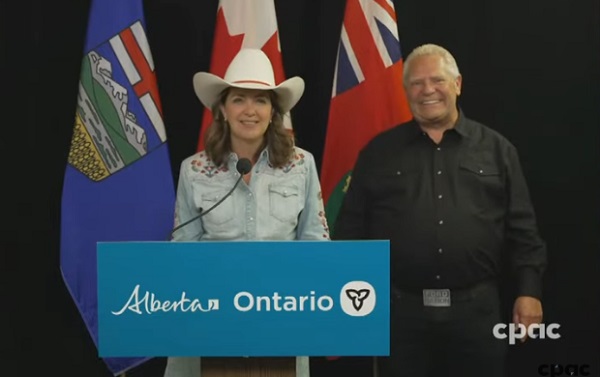
Alberta-Ontario MOUs fuel more pipelines and trade
Alberta Premier Danielle Smith and Ontario Premier Doug Ford have signed two memorandums of understanding (MOUs) during Premier Ford’s visit to the Calgary Stampede, outlining their commitment to strengthen interprovincial trade, drive major infrastructure development, and grow Canada’s global competitiveness by building new pipelines, rail lines and other energy and trade infrastructure.
The two provinces agree on the need for the federal government to address the underlying conditions that have harmed the energy industry in Canada. This includes significantly amending or repealing the Impact Assessment Act, as well as repealing the Oil Tanker Moratorium Act, Clean Electricity Regulations, the Oil and Gas Sector Greenhouse Gas Emissions Cap, and all other federal initiatives that discriminately impact the energy sector, as well as sectors such as mining and manufacturing. Taking action will ensure Alberta and Ontario can attract the investment and project partners needed to get shovels in the ground, grow industries and create jobs.
The first MOU focuses on developing strategic trade corridors and energy infrastructure to connect Alberta and Ontario’s oil, gas and critical minerals to global markets. This includes support for new oil and gas pipeline projects, enhanced rail and port infrastructure at sites in James Bay and southern Ontario, as well as end-to-end supply chain development for refining and processing of Alberta’s energy exports. The two provinces will also collaborate on nuclear energy development to help meet growing electricity demands while ensuring reliable and affordable power.
The second MOU outlines Alberta’s commitment to explore prioritizing made-in-Canada vehicle purchases for its government fleet. It also includes a joint commitment to reduce barriers and improve the interprovincial trade of liquor products.
“Alberta and Ontario are joining forces to get shovels in the ground and resources to market. These MOUs are about building pipelines and boosting trade that connects Canadian energy and products to the world, while advocating for the right conditions to get it done. Government must get out of the way, partner with industry and support the projects this country needs to grow. I look forward to working with Premier Doug Ford to unleash the full potential of our economy and build the future that people across Alberta and across the country have been waiting far too long for.”
“In the face of President Trump’s tariffs and ongoing economic uncertainty, Canadians need to work together to build the infrastructure that will diversify our trading partners and end our dependence on the United States. By building pipelines, rail lines and the energy and trade infrastructure that connects our country, we will build a more competitive, more resilient and more self-reliant economy and country. Together, we are building the infrastructure we need to protect Canada, our workers, businesses and communities. Let’s build Canada.”
These agreements build on Alberta and Ontario’s shared commitment to free enterprise, economic growth and nation-building. The provinces will continue engaging with Indigenous partners, industry and other governments to move key projects forward.
“Never before has it been more important for Canada to unite on developing energy infrastructure. Alberta’s oil, natural gas, and know-how will allow Canada to be an energy superpower and that will make all Canadians more prosperous. To do so, we need to continue these important energy infrastructure discussions and have more agreements like this one with Ontario.”
“These MOUs with Ontario build on the work Alberta has already done with Saskatchewan, Manitoba, Northwest Territories and the Port of Prince Rupert. We’re proving that by working together, we can get pipelines built, open new rail and port routes, and break down the barriers that hold back opportunities in Canada.”
“Canada’s economy has an opportunity to become stronger thanks to leadership and steps taken by provincial governments like Alberta and Ontario. Removing interprovincial trade barriers, increasing labour mobility and attracting investment are absolutely crucial to Canada’s future economic prosperity.”
Together, Alberta and Ontario are demonstrating the shared benefits and opportunities that result from collaborative partnerships, and what it takes to keep Canada competitive in a changing world.
Quick facts
- Steering committees with Alberta and Ontario government officials will be struck to facilitate work and cooperation under the agreements.
- Alberta and Ontario will work collaboratively to launch a preliminary joint feasibility study in 2025 to help move private sector led investments in rail, pipeline(s) and port(s) projects forward.
- These latest agreements follow an earlier MOU Premiers Danielle Smith and Doug Ford signed on June 1, 2025, to open up trade between the provinces and advance shared priorities within the Canadian federation.
Related information
-

 Business2 days ago
Business2 days agoRFK Jr. says Hep B vaccine is linked to 1,135% higher autism rate
-
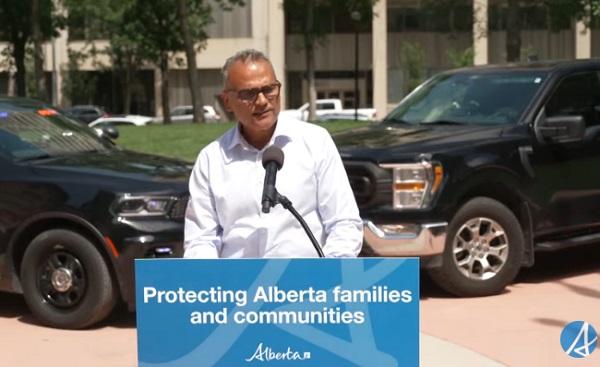
 Alberta1 day ago
Alberta1 day agoAlberta Provincial Police – New chief of Independent Agency Police Service
-
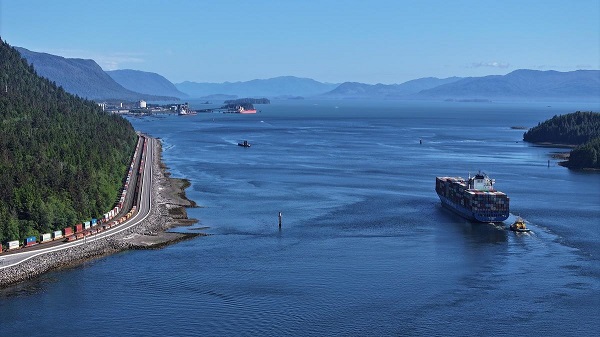
 Business1 day ago
Business1 day agoWhy it’s time to repeal the oil tanker ban on B.C.’s north coast
-
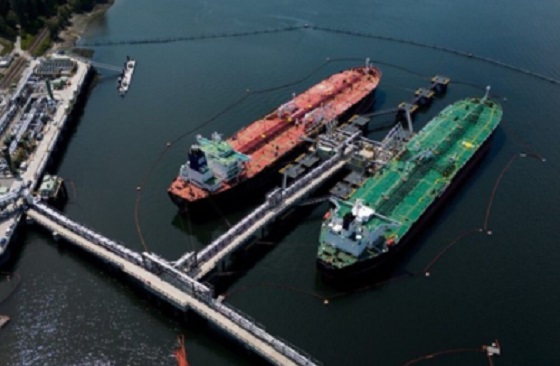
 Energy1 day ago
Energy1 day agoIf Canada Wants to be the World’s Energy Partner, We Need to Act Like It
-
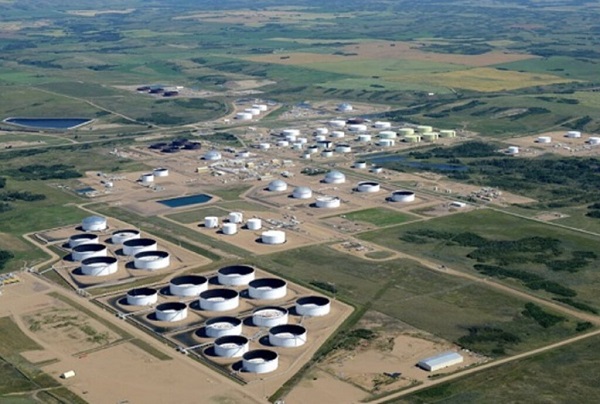
 Alberta1 day ago
Alberta1 day agoPierre Poilievre – Per Capita, Hardisty, Alberta Is the Most Important Little Town In Canada
-
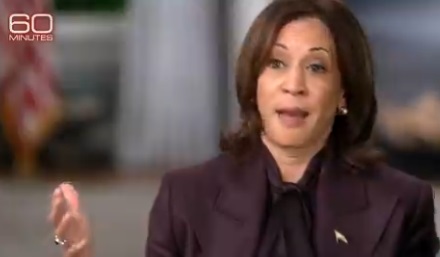
 International1 day ago
International1 day agoCBS settles with Trump over doctored 60 Minutes Harris interview
-

 Aristotle Foundation1 day ago
Aristotle Foundation1 day agoHow Vimy Ridge Shaped Canada
-

 Alberta23 hours ago
Alberta23 hours agoAlberta uncorks new rules for liquor and cannabis

